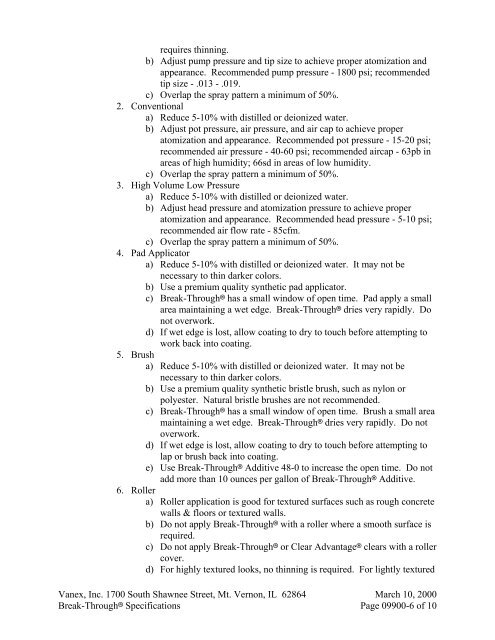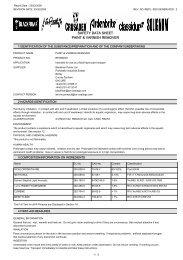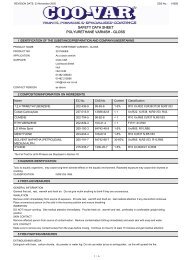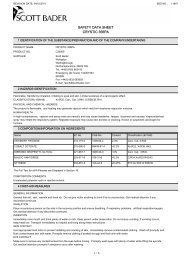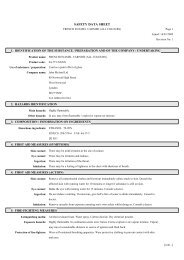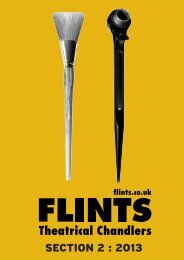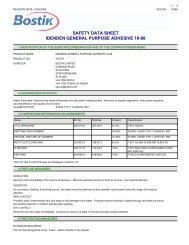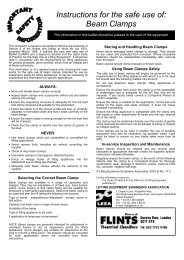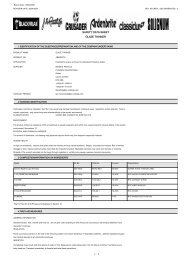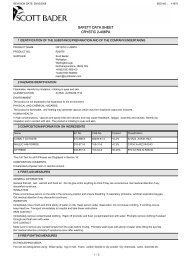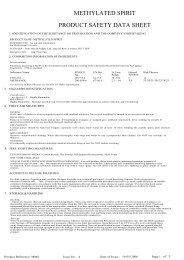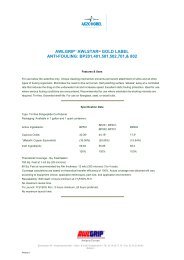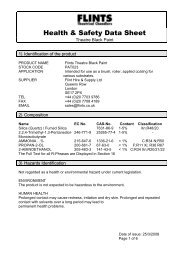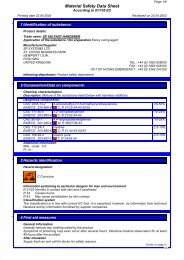Break-Through Usage Instructions
Break-Through Usage Instructions
Break-Through Usage Instructions
You also want an ePaper? Increase the reach of your titles
YUMPU automatically turns print PDFs into web optimized ePapers that Google loves.
equires thinning.<br />
b) Adjust pump pressure and tip size to achieve proper atomization and<br />
appearance. Recommended pump pressure - 1800 psi; recommended<br />
tip size - .013 - .019.<br />
c) Overlap the spray pattern a minimum of 50%.<br />
2. Conventional<br />
a) Reduce 5-10% with distilled or deionized water.<br />
b) Adjust pot pressure, air pressure, and air cap to achieve proper<br />
atomization and appearance. Recommended pot pressure - 15-20 psi;<br />
recommended air pressure - 40-60 psi; recommended aircap - 63pb in<br />
areas of high humidity; 66sd in areas of low humidity.<br />
c) Overlap the spray pattern a minimum of 50%.<br />
3. High Volume Low Pressure<br />
a) Reduce 5-10% with distilled or deionized water.<br />
b) Adjust head pressure and atomization pressure to achieve proper<br />
atomization and appearance. Recommended head pressure - 5-10 psi;<br />
recommended air flow rate - 85cfm.<br />
c) Overlap the spray pattern a minimum of 50%.<br />
4. Pad Applicator<br />
a) Reduce 5-10% with distilled or deionized water. It may not be<br />
necessary to thin darker colors.<br />
b) Use a premium quality synthetic pad applicator.<br />
c) <strong>Break</strong>-<strong>Through</strong>7 has a small window of open time. Pad apply a small<br />
area maintaining a wet edge. <strong>Break</strong>-<strong>Through</strong>7 dries very rapidly. Do<br />
not overwork.<br />
d) If wet edge is lost, allow coating to dry to touch before attempting to<br />
work back into coating.<br />
5. Brush<br />
a) Reduce 5-10% with distilled or deionized water. It may not be<br />
necessary to thin darker colors.<br />
b) Use a premium quality synthetic bristle brush, such as nylon or<br />
polyester. Natural bristle brushes are not recommended.<br />
c) <strong>Break</strong>-<strong>Through</strong>7 has a small window of open time. Brush a small area<br />
maintaining a wet edge. <strong>Break</strong>-<strong>Through</strong>7 dries very rapidly. Do not<br />
overwork.<br />
d) If wet edge is lost, allow coating to dry to touch before attempting to<br />
lap or brush back into coating.<br />
e) Use <strong>Break</strong>-<strong>Through</strong>7 Additive 48-0 to increase the open time. Do not<br />
add more than 10 ounces per gallon of <strong>Break</strong>-<strong>Through</strong>7 Additive.<br />
6. Roller<br />
a) Roller application is good for textured surfaces such as rough concrete<br />
walls & floors or textured walls.<br />
b) Do not apply <strong>Break</strong>-<strong>Through</strong>7 with a roller where a smooth surface is<br />
required.<br />
c) Do not apply <strong>Break</strong>-<strong>Through</strong>7 or Clear Advantage7 clears with a roller<br />
cover.<br />
d) For highly textured looks, no thinning is required. For lightly textured<br />
Vanex, Inc. 1700 South Shawnee Street, Mt. Vernon, IL 62864 March 10, 2000<br />
<strong>Break</strong>-<strong>Through</strong>7 Specifications Page 09900-6 of 10


